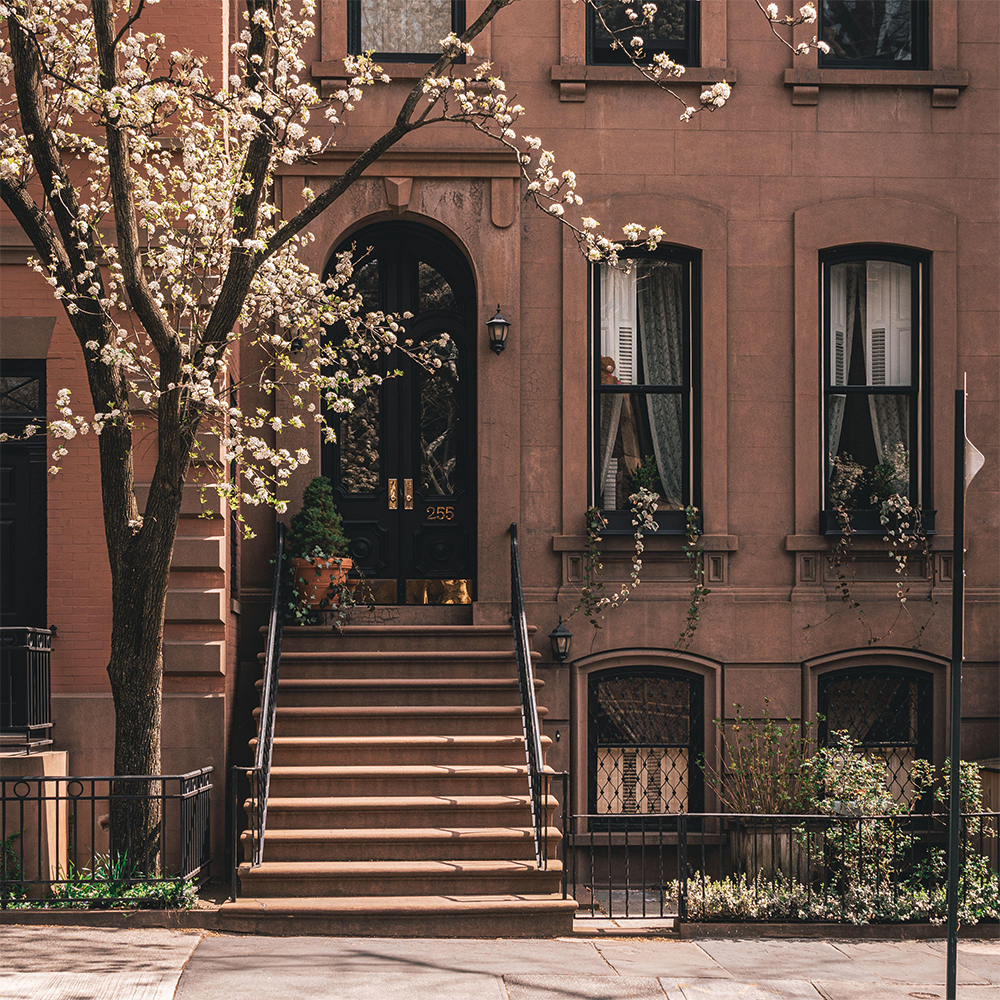I remember poring over the photos when they first appeared in Architectural Digest in early 2023. Even back then, before Lily Allen wrote what Rolling Stone called “the most brutal album of the year,” I knew in my gut that her marriage to that actor guy she met on Raya – whatshisface? David Strangerbeard? – wouldn’t last. Because looking at the pictures of their house made me feel queasy. There was something off about it. It just wasn’t right. It didn’t bode well.
It’s not that the house wasn’t gorgeous. It was – and still is – spectacular. A double-width brownstone in the slouchiest artisanal urban village on Earth: Carroll Gardens, Brooklyn. A house which was put back on the market for just under $8 million the same week as Allen’s new album West End Girl’s release in October.
Those vast double-aspect Georgian-paned windows. And that’s all before we even get to the inside. There’s a green velvet-tufted-gay-hairdresser-orgy-sofa, a pick ‘n’ mix clash of patterns, the patterned wallpaper, the floors. Carpet in the bathroom! Wall-to-wall plush! The absolute cheek of it.
The house is an exercise in trans-Atlantic retro-maximalism at the aesthetic’s peak-bling phase. It’s Edith Wharton meets Claus Von Bülow’s dead wife with insouciant accents of Disney-princess bordello. It’s an object of beauty specific to its time and place, which was 2023. But no one who saw that house in print ever forgot it. Seriously, I’ve done a vast survey using a sample group of six women at a dinner party.
But let me get to the heart of the matter. There was always something wrong about the house. Something dead behind the eyes. I felt queasy looking at the pictures. Didn’t you? I thought, “Eeeesh.” Human suffering radiated from the pictures on the page. The writing was on the wallpaper.
The Lily Allen/David Harbour saga is not about a break-up, nonmonogamy, the state of marriage, female outrage or male selfishness. It’s not even really about the songs on Allen’s album, which are catchy but only in the way that an entertaining musical is. Once the story – that Harbour sought an open marriage Allen didn’t really want – ceases to matter, the songs won’t seem so brilliant. The real story is that brownstone: the unhappy marital home that became a haunting piece of art and an object lesson for the (desperate?) housewives of America.
What the story of that house reveals about the rise of interiors porn is fascinating in a broader cultural sense. In London, the city where I live, just as much as in New York City, the house-beautiful cult is like a virus. It seems to grow in inverse proportion to the eternally dismal economic forecast. The house obsession never stops. For example, it has become commonplace for people where I live to regard their homes as set pieces and brand extensions rather than places where they live with their families. In my neighborhood, middle-class professionals think nothing of spending several years searching out, buying, gutting and meticulously doing up houses at enormous expense, not just to their bank balances but to their sanity and happiness. I have known not just one but several intelligent, educated women (always, always women, invariably mothers) who have abandoned and/or put on hold hard-won careers in order to “project manage” epic back-to-the-studs renovations that stretch on like Russian novels.
These women suffer and starve for periods of four to six years, sometimes more, because during these gut-jobs they lose their minds and become boring to everyone around them – including themselves. They cannot think or talk about anything of substance: it’s all weighted drawers, cornices, granite grain and light fixtures. They begin to believe these things are, genuinely, a matter of life or death. Renovation brain is like baby brain but so much worse, for the obvious reason there’s no baby involved. I have seen the best minds of my generation lost to kitchen extensions. Truly! Did we all actually go to university to become volunteer construction project mangers in middle age? It’s insane.
But surely no one actually believes that doing up a house is a substitute for meaningful work? Or that a perfect house makes for a perfect and harmonious family life? And yet, we do. Every generation falls for the same trick. Why?
There’s something else driving the perfect-house obsession. It’s the same pernicious fallacy that made women of previous generations obsessed with cleanliness and germ-killing, and before that flower arranging and needlepoint. It’s the delusion that if you can just focus on the details, fuss and fuss and fuss, eventually you make everything perfectly perfect and shiny on the outside. The inside will naturally follow suit. But life and human relationships don’t work like that. As Allen found out.
Having been through the wringer of divorce as both a child and an adult, I have moved house countless times and also been trapped in the marital home. I’ve done my fair share of renovating and agonizing over cabinet knobs, and here is what I have learned: beyond a modicum of comfort and space, the state of the family home is basically irrelevant to the state of the relationships that exist within it. Aesthetics are accessories to life, they are not love or art. They are not even water or food.
What divorce forces you to acknowledge is that your perfect house won’t save you. It didn’t save me as a child any more than it did as a middle-aged woman who made the same mistake my mother did. Allen’s album is a hit because it’s a reckoning with this universal thought-trap. The cautionary tale of the perfect house. New furnishings, same blunder. Having said that, I’m all for wall-to-wall patterned carpet in the bathroom.
This article was originally published in The Spectator’s November 24, 2025 World edition.























Leave a Reply